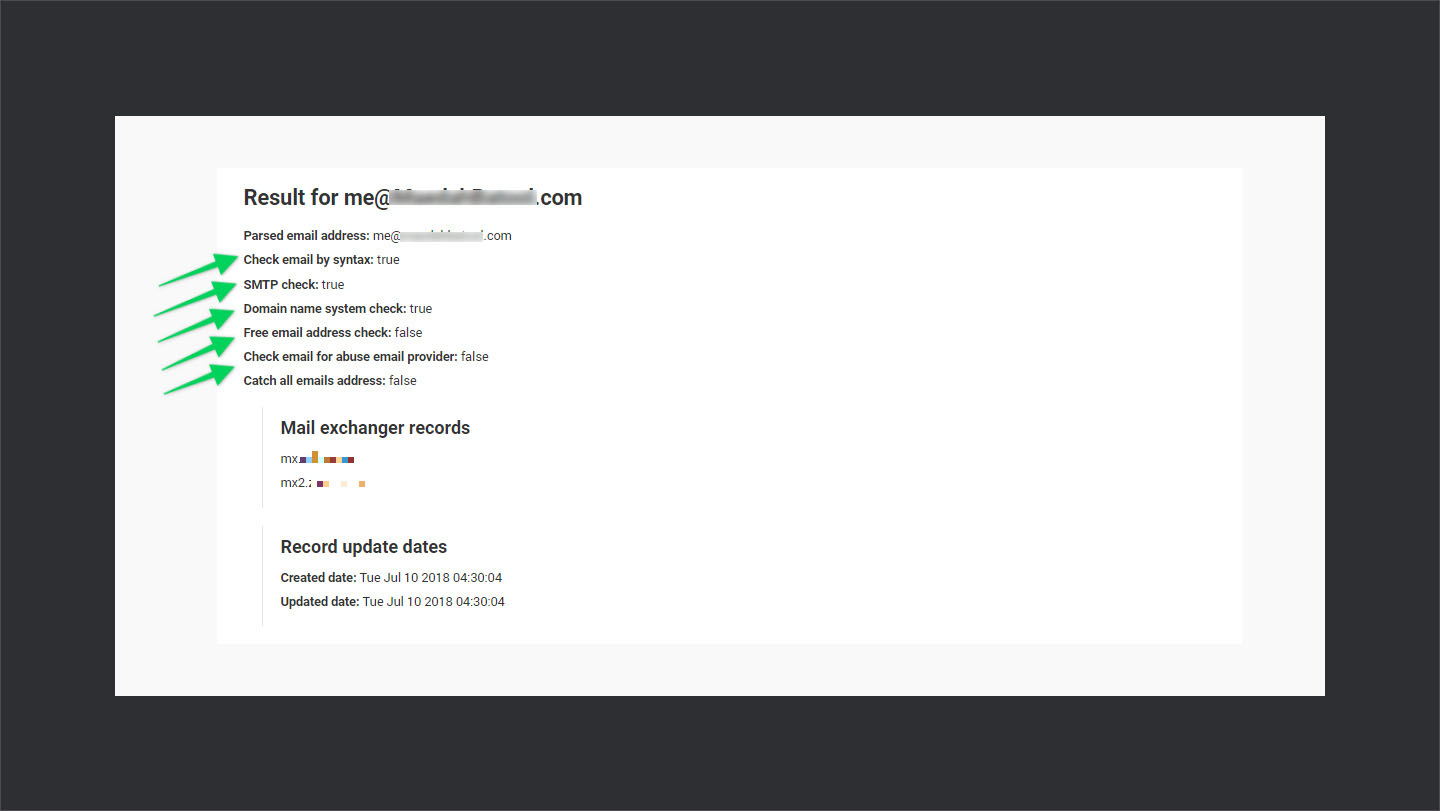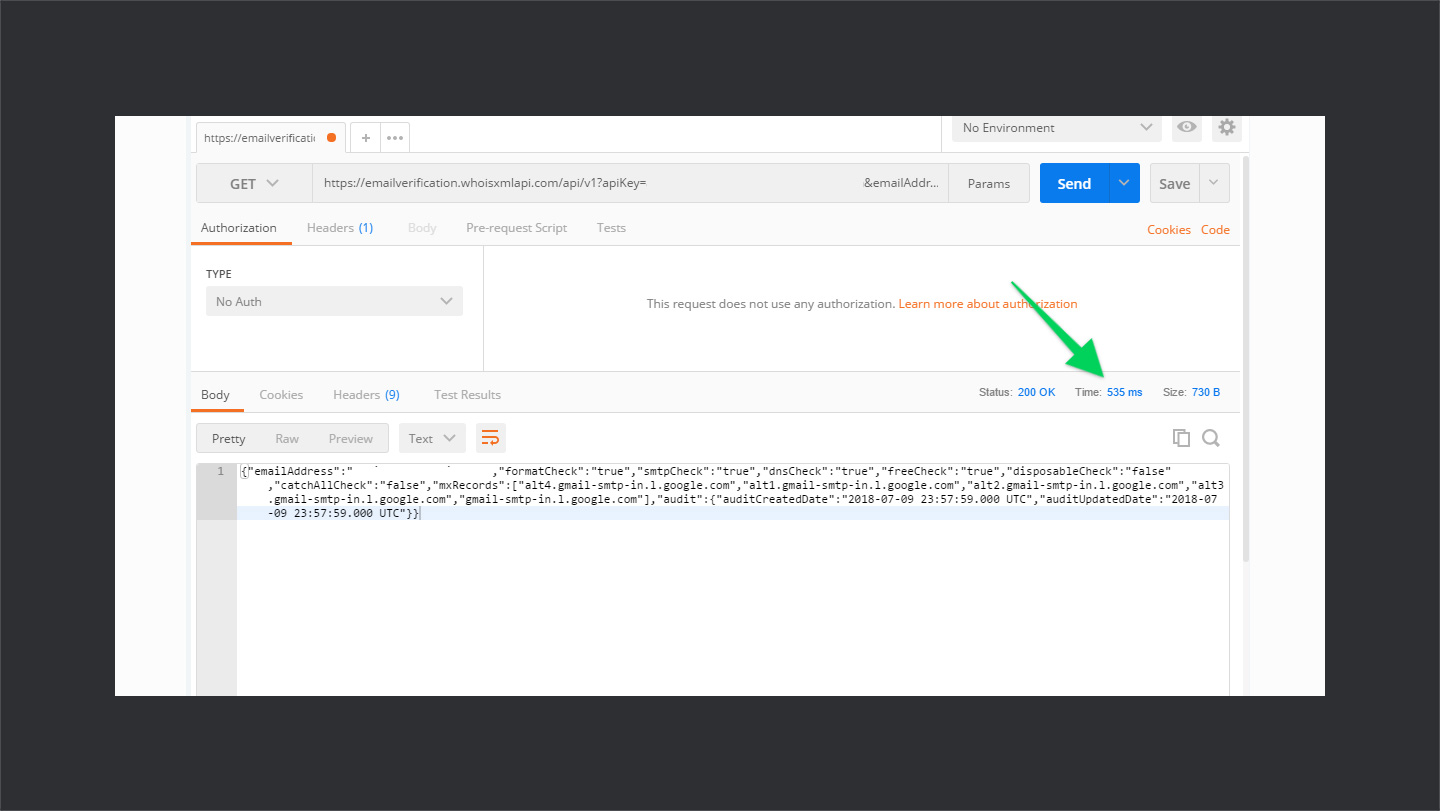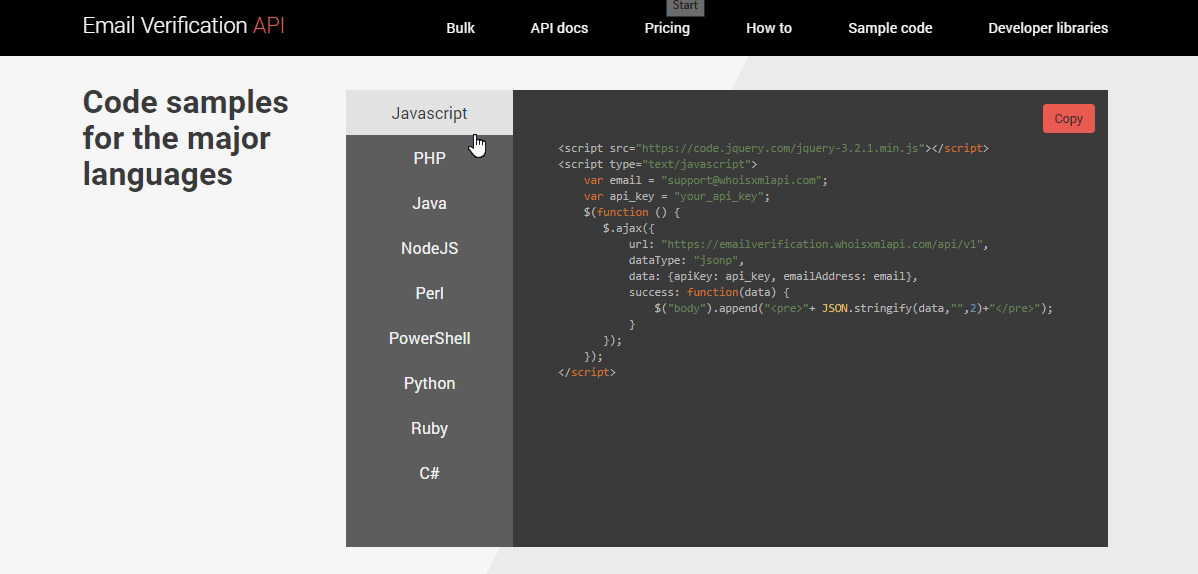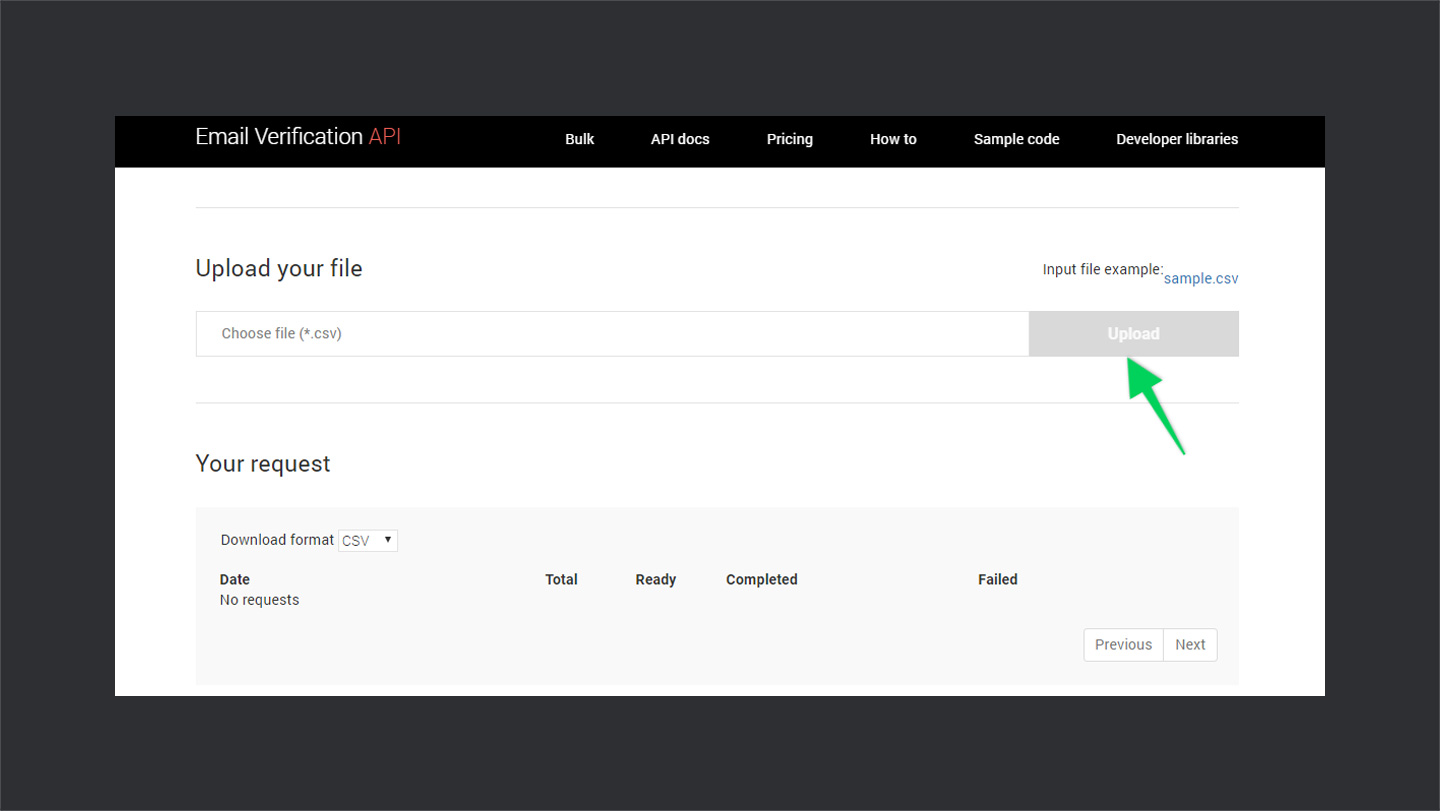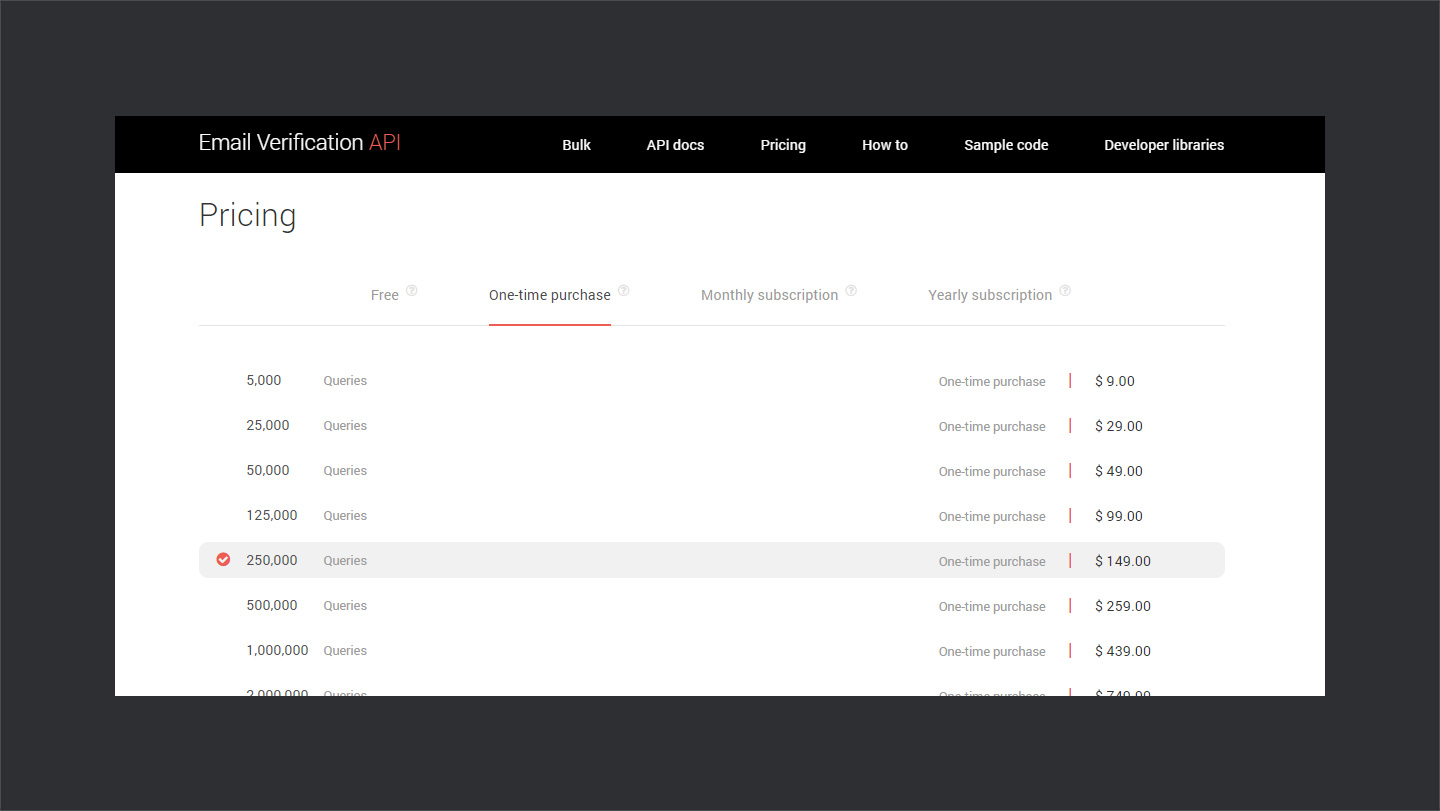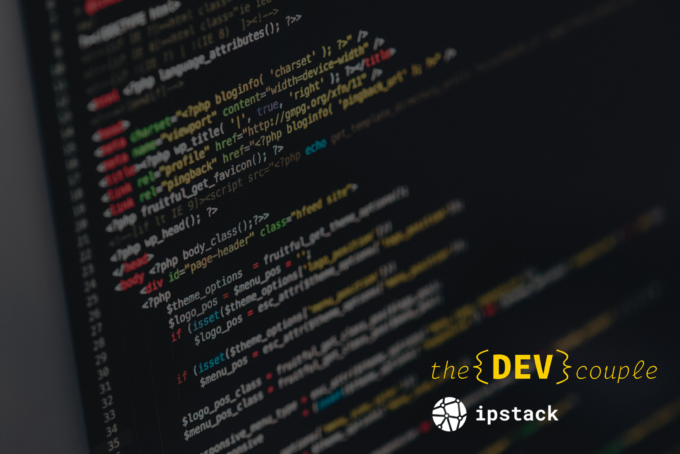Email holds a prime significance in the digital world. The essence of the email — communication — encloses countless use cases over the internet — purchases, promotions, invitations, newsletters, and what not. It’s hard to imagine the impact of the emails and an internet without it.
Considering this amount of significance, the importance of factors related to email — security, reliability, accuracy, etc. — has grown over the time. That’s why we see a ton of tools and email services available over the internet. In fact, complete businesses have evolved around email applications.
If you own a product, send a newsletter, or handle users like I do for myself and my clients, you would know that there’s a complete workflow for sending emails. There are certain factors to be considered while building and maintaining an email list. One of the key factors is email verification which encapsulates a number of features in it.
I always love to try new things and keep a variety of tools in my toolkit. It comes in handy while designing solutions with different requirements. Recently, while building an email workflow for the registered users, I came across an incredible Email Verification API by WhoIsXMLAPI.
It’s a solid email validation API which makes use of an extensive WhoIs database combined with smart algorithms to validate the email addresses. It checks the given email address against multiple layers to verify it. Also, it fights the spam and disposable email addresses as well. Super cool, right? 💯
After toying around with this API for a while, I am super excited to share it with you. I will be taking a deep dive into its functionalities, working, and performance. So, let’s get started!
⚡ Email Verification API by WhoisXMLAPI
Email Verification API is a product of Whois API Inc. — one of the leading Whois API Webservices and data providers. WhoisAPI Inc. was launched over more than 8 years ago in Jan 2010. It is led by the incredible Jonathan Zhang the CEO of Whois API LLC. Currently, they have headquarters in Los Angeles.
🦄
During this period of less than a decade, Whois API Inc managed to serve the fortune 500 companies. They have an impressive list of clients including big names like Apple, Cisco, AT&T, eBay, Amazon, IBM, and Symantec. They manage an extensive database of 5 billion+ historic WHOIS records, 1.2 billion+ domains and subdomains, 2,864+ TLDs & ccTLDs, 8.7 million+ IP netblocks, and 99.5% IP addresses in use.
Talking about their Email Verification API, it currently serves a community of ~2500 satisfied customers with 30M+ email addresses verified. It provides the response of HTTP request both in XML & JSON format. You can perform email verification individually or in bulk.
Apart from Email Verification API, they have got a great range of Whois products. A few of them are listed below:
- 🌐 IP Geolocation API — An API to instantly find the exact physical geolocation of an IP address.
- 🔍 Reverse IP API — An interesting API for discovering connected domains hosted on same IP address.
- 🔴 Threat Intelligence API — Analyze host for any suspicious activity.
- ✔️ Domain Availability API — Check domain name availability for almost all the TLDs.
🍭 Functionalities
Email Verification API filters the given email address through multiple checks to make sure that it’s valid. Let’s take a quick look at the primary features of this API.
✅ Syntax Check
Checks if the entered email address confines to the specifications set by Internet Engineering Task Force (IETF). These specifications are called Request For Comments (RFC). Which impose a set of rules to standardize email addresses throughout the internet. By checking against those rules, it makes sure that email address is valid.
These specifications include rules for both the local part — before the ‘@‘ sign — and the domain part — after the ‘@‘ sign. So, in case if someone violates syntax rules it’s caught super quick!
🎛 Disposable Email Address
There are literally tons of services available which provide you temporary email addresses like Guerrilla Mail, EmailOnDeck, and much more. Users can use them to get a temporary email address sign up and do whatever stuff they want to. But what happens, in the long run, is, you end up losing valuable customers, sales, and revenue.
Email Verification API identifies such email address and make sure users don’t use them for any activity on your end. It checks the email address against a database of 2000+ disposable email address providers. Quite awesome! 🤙
📬 Mail Server and Mailbox Existence
Whenever domain provides an email address, it’s Domain Name Server (DNS) has Mail Exchanger (MX) records. They are used to route the emails whenever such request is made to the domain. In short, they indicate the email servers and route the email requests properly.
The existence of MX records against the domain name of an email address makes sure that it’s a valid mail server. An SMTP request can be made to such a server for sending emails. Email Verification API takes a step further and check if the particular email address exists on the server or not. For this purpose, it uses email sending emulation techniques. 👌
Below is the preview of the result for the validity check for my email. For each different check, it sends back a field and a boolean value for its existence. It also mentions the time when the record was updated last time. You can get the result in either JSON or XML format. Preview in screenshot contains a processed form of the result.
🚀 Performance
Two things which matter most in API are confidence and performance. It needs to be super fast and responsive if you aim to implement in a real-time system. You can’t afford to wait for a couple of minutes before you receive results. In fact, most of the time it’s just a matter of a couple of milliseconds.
Now, Whois API Inc. rocks a huge database of email whois and perform multiple checks. So, I decided to take it for a spin and see how efficient is its search algorithms and implementation are. To be honest, I was pretty much impressed. 🔥
So, I made a couple of requests against the known email addresses to check out the accuracy and analyze the performance. I used Postman for this purpose and below are quick highlights of the results. Note that these results are for email addresses which are not common, like email addresses with custom domains.
- ⏳ Average response time was around ~1-2 seconds.
- 🛡 If I made a request for the email address twice, the response time was significantly reduced to a few hundred milliseconds. Which indicates the use of some server cache.
- 💥 When I made a request to the same email server, but different email id, response time was reduced by ~600-700ms.
- ✊ It performed checks in an intelligent way. For example, when I made a typo, it was super quick in response.
Results are even better when you use email addresses of a common email server. Because it is smart enough to quickly recognize the email server and skip certain steps. Checkout the screenshot below for a validation request to Gmail.
⚙️ Working
Email Verification API allows you to perform the validation of email addresses in bulk or individually. For the single email address verification, a simple HTTP request is used while for bulk verification you need a .csv file. Below are the details on how you can perform validation.
When you sign up for Email Verification API, you actually purchase credits. Each request of Email Verification API costs a single credit. Even when you make a bulk request, the cost remains the same.
→ Single Email Address Validation
You can easily perform a single email address validation via an HTTP request. There are two parameters which you need to pass i.e. apiKey and emailAddress. You can grab your API key from your dashboard of Whois API and make an HTTP request at the following endpoint.
If you go to the site of Email Verification API, you can find sample code for all major languages. It includes Javascript, PHP, Java, NodeJS, Perl, PowerShell, Python, Ruby, and C#. Which is pretty great! All you need to do is grab that piece of code, make the changes, and you’re good to go.
→ Bulk Email Verification
To perform a bulk email verification, you need a CSV file of the email addresses. You can validate up to 50,000 email addresses in bulk and the file size should not exceed 5MB. It takes a while before it processes the email addresses. However, the result is stored for 7 days in your account.
To verify the email addresses in bulk, head to the bulk email verification page. Also, make sure that you’re login into your account. Then you need to upload the CSV file on the page. Once it’s processed, you can download the results in three formats — CSV, XML, and JSON. The page also contains sample input and output files to better help you understand the flow.
Now, this could be very handy, if you have a list of subscribers or email addresses and you want to check their validity. It will help you filter out the dead email addresses. This way you can do effective email marketing and get better results. 🤞
🎯 Up and Running with NodeJS
If you use NodeJS for your applications, you can do even more with Email Verification API. They have an NPM package written for using Email Verification API. Follow the quick steps below to get started with it.
→ Step #1
The first and foremost step is to sign up for Email Verification API credit. Save your credentials, because you would need them instead of the API key in this case. Once done, move on to step 2.
→ Step #2
Email Verification API package is named as email-verifier. You can install it just like any other package using NPM. Spin up a NodeJS application and open your terminal. Execute the following command to install the package.
→ Step #3
After the second step, the package will be successfully installed and added to your dependencies list. Next step is to invoke the package in the app to verify the email address. Below is a heavily commented snippet to help you accomplish that.
That’s the most simple call which you can make in your app. You can further modify it to skip some checks or perform specific checks. Check out the detailed documentation on their website to start customizing the request.
So, just 3 simple steps and you’re up and running with the Email Verification API. Now, the best part is, it makes the code more manageable. Put your code in a separate file and modify it to make changes to your all requests throughout the app. Pretty awesome! 👌
🔥 Support & Documentation
Before making a purchase or integrating a new product into my project, I always give a shot to the support. A great support is always a big relief. It saves you from the headache of figuring out things on your own when you are stuck at something.
To be honest, I found the support at Whois API Inc quite responsive and helpful. Although it takes some time to get connected at first, once you get connected, things go smooth. So, a thumbs up for it. 👍
Another important factor of a product is its documentation. And I must say, Email Verification API has got pretty much everything on their documentation page which you’ll ever need. You can get all the details on making a request, modifying it, and understanding the response fields.
💰 Pricing
Since it’s an API, there’s no features distinction in different plans. It provides all the features irrespective of the plan. It only varies in terms of the number of calls and recurrence time. You can choose between one-time, monthly, and yearly plans.
Monthly subscription starts from 10000 calls/$9 while yearly subscription starts from 10000 calls/$90. Technically you get 2 months free if you go for a yearly plan. Same goes for a higher number of calls. You can even get a custom plan according to your needs.
Also, Email Verification API offers 1000 free calls per month if you sign up for a free plan. It can be really helpful for prototyping. It works as good as the premium one. So, you can a pretty good idea of the API.
🤞 Final Thoughts
Email Verification API is a solid solution for validating email address and trusted by big names. It can be easily deployed to verify email address during the onboarding process. As a result, you can build a better mailing list, which in turn can bring great conversions.
So, if you are a developer building a product and need to verify email addresses, you should definitely give it a shot. And if that’s a NodeJS application, you can add it even more efficiently to your application. Even a marketing guy can use it to filter mailing lists and generate better results.
Have you ever encountered a situation where you’d to verify email addresses? How did you go around the requirements? And if you’ve ever used Email Verification API or any other email verification solution, let me know your thoughts in the comments below.
Peace! ✌️
🙌
SUBSCRIBE TO DEVELOPERS TAKEAWAY!
A Premium Development Newsletter by TheDevCouple! What is TheDevTakeaway?


